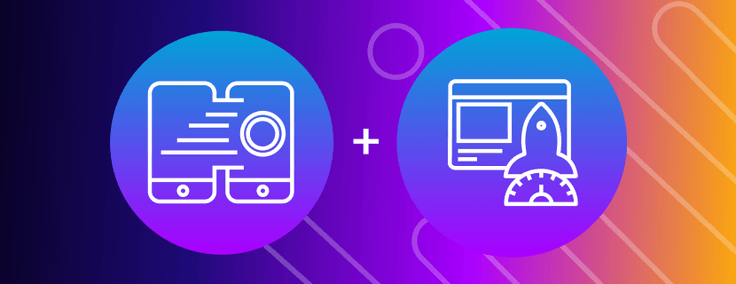
This article takes you through the use cases of real-time analytics databases, and how they help different functions in your business perform better and faster.
Table of Contents
- What Is a Real-Time Database
- The Need for Real-Time Analytics Databases
- Real-Time Data Ingestion
- Complex Query Workloads
- Blazing Fast Insights With High Concurrency
- Highly Reliable
- Real-Time Analytics Database Use Cases
- Finance
- Logistics
- Security
- Availability Requirements on Data Warehouses vs. Real-Time Analytics Databases
- Conclusion
What Is a Real-Time Analytics Database?
The ability to store, process and retrieve data at blazing fast speeds is one of the core requirements of modern businesses that intend to make data-driven decisions. A dramatic increase in the volume and variety of data collected has pushed businesses to reconsider their infrastructure choices. Underlying all of these choices are databases.
In the traditional relational database setups, deriving value from data is difficult because the data has to be moved around, transformed and loaded into a data warehouse or a data lake before the business can consume it. This multistep process takes quite a lot of time — often a few hours, but sometimes days.
Streaming engines like Kafka help, but only to an extent, as they can only help for the production and consumption of data as it is, and don't allow for analytics on streaming data. The fundamental need was a database that could process large amounts of data in real-time, which is what a real-time analytics database does.
Real-time analytics databases handle analytics on large amounts of data by optimizing resources to enable compute-heavy workloads. This is accomplished with a massively parallel processing architecture with a high degree of concurrency, architected in a way that doesn’t result in massive infrastructure costs. This article takes you through the use cases of real-time analytics databases, and how they help different functions in your business perform better and faster.
The Need for Real-Time Analytics Databases
Businesses with traditional setups use data warehouses as analytics databases, but as mentioned at the beginning of the article, the process of loading data into a data warehouse for consumption purposes is slow and costly. While data warehouses are excellent for use cases when you have to integrate many data sources, it isn’t usually efficient to use them for real-time analytics.
Data warehouses are designed with a long-term view in mind. They are designed to accommodate precise, structured reporting and analytics requirements that you might need to serve for a long time.
Real-time analytics databases are built to serve similar query workloads, but with the added constraint of time-criticality. Because of this constraint, real-time analytics databases are architected to be more flexible in working with a variety of data formats, and include built-in optimizations for quick ingestion and consumption of data.
Data warehouses and real-time analytics databases share many architectural features, too. For instance, both types of databases can potentially use massively parallel processing to enable distributed computing for faster query results. On the other hand, there are significant differences between the two, especially when it comes to adapting to dynamic workloads.
One such example would be the ability of a real-time analytics database to scale up and down based on the real-time data requirements. A typical data warehouse is simply not designed or equipped to do that, not just because of the architecture, but also because of the processes that drive the data warehouse.
With that in mind, let’s look at why businesses might need real-time analytics databases.
Real-Time Data Ingestion
It isn’t the case that only IoT devices, surveillance systems and high-frequency trading (HFT) platforms require real-time data to be ingested. Businesses generate more real-time data than ever before through a complex network of applications, third-party API integrations, advertising and clickstream data. Only a tiny part of the data is inherently well-suited for storage and consumption in a relational database; the rest usually requires a purpose-built database.
The data you need to make time-sensitive business decisions that drive growth, resolve customer complaints and generally serve your customers better needs a real-time analytics database.
A core function of a real-time analytics database is to provide very low latency for efficient and continuous data ingestion and consumption at scale. Ingestion and read-heavy query workloads benefit greatly from flexible indexing, which is where a database offers several indexing techniques to support different kinds of workloads. Common indexing techniques are in-memory indexes, geospatial indexes and full-text search indexes.
Complex Query Workloads
Anyone who’s written SQL queries to answer real business queries knows that those queries are rarely simple. They're often very intricate and complex not just in their construction, but also in terms of the advanced SQL functionality they need to process the data in the most efficient way.
A database with efficient support for SQL will enable businesses to write complex — not complicated — queries to answer complex business questions. Some advanced SQL functionality might include moving window functions, continuous queries, full-text search capability, conditional aggregates, in-memory capabilities, time-series and geospatial support and advanced support for JSON as a native data structure. Additionally, the SQL syntax shouldn’t deviate much from the latest ISO standard for SQL.
Blazing Fast Insights With High Concurrency
Although it is a core requirement for an excellent real-time analytics database, enabling business users to write complex queries in a readable manner isn’t enough. These queries have to be fast. They have to be real-time, which means they have to support real-time analytics needs such as continuous queries and search engine-like workloads.
Real-time analytics databases have to support memory and compute-heavy queries for a large number of users concurrently accessing the data. In this type of database, the operability and scalability of the underlying storage and compute won’t be highly interdependent, allowing for many simultaneous users to crunch a large amount of data in very short periods of time.
Another way real-time analytics databases enable fast insights is by efficiently using memory because a trip to the disk, even if the disk is a state-of-the-art SSD, is several orders of magnitude costlier than a trip to the memory. There must be a delicate balance between compute, storage (disk and memory) and network. Many databases implement this by decoupling compute and storage, which allows those resources to be scaled independently, giving you the flexibility of using more or less of each, as required.
Highly Reliable
Real-time analytics serves critical business functions for many businesses, which is why one of the most essential features in these databases is reliability. Databases can build reliability into their infrastructure by architecting for fault-tolerance, business continuity and disaster recovery, among other things.
As cost is a significant factor in choosing technology stacks that will bring the most value to a business, real-time analytics databases should also provide a smooth upscaling and downscaling experience based on workloads. A smooth scaling experience will not only enhance application performance, but will also end up costing less because it will use the infrastructure more efficiently.
Real-time Analytics Database Use Cases
Real-time analytics has become a crucial consideration for a large number of businesses across a wide variety of industries, including manufacturing, customer electronics, finance, marketing, retail and entertainment. As many of these domains are highly competitive, businesses need real-time analytics to distinguish themselves with a competitive advantage from faster insights than their competitors.
To get insights faster, companies need to have the infrastructure required to ingest, clean and transform the data quickly to make it available for analytics. Let’s look at some domains where businesses need real-time analytics databases to operate and grow quickly and sustainably.
Finance
Some of the businesses that can benefit the most from real-time analytics are the ones that operate in high-frequency trading, cryptocurrencies, market analysis, long-term futures trading and other financial domains. These are businesses where a faster delivery of data, even by a few milliseconds, can make a huge difference. One such use case is algorithmic trading, where real-time data is of tremendous value.
Real-time analytics databases rely on lightweight ingestion protocols and efficient storage structures on disk to allow for super-fast ingestions. The main challenge with financial data is that it requires ultra-low latency ingestion, which traditional databases aren’t able to provide. Moreover, an excellent real-time analytics database has many powerful features out of the box, such as easy ingestion from multiple data sources, guaranteed message delivery and different storage options. These features can help businesses to get actionable insights without writing much code.
Logistics
Another domain with vast amounts of data is that of transportation and logistics. Whether it's hyperlocal delivery or cargo ships, personalized urban commutes or metropolitan and interstate transit, every company responsible for transporting goods or people from one place to another faces tremendous challenges concerning timeliness, accuracy, safety and security.
One exceptionally complicated aspect of logistics work is trying to solve last-mile problems for densely populated areas. Companies need to manage the difficulties of route optimization, delivery time optimization and comfort optimization to maintain driver safety and provide the best customer experience, but due to the constant changes of the urban landscape, precomputing routes often isn't possible.
With the speed and volume with which data comes in from GPS devices, mobile phones and other tracking devices, performing analytics with traditional databases and data warehouses becomes difficult, if not impossible. A real-time analytics database can make a substantial difference by enabling businesses to not only ingest and transform real-time data, but also run complex ad-hoc queries on both structured and semi-structured data.
Security
Security and surveillance are two major areas where real-time analytics on structured and unstructured data is crucial. Using real-time analytics, businesses and government agencies can not only track criminals, but can also help prevent crimes from happening. Many state and federal police departments, investigative agencies and other branches of government use real-time data and analytics to be more swift and efficient.
One such example is that of the Seattle Police Department, which uses real-time data from dashboard cameras, audio recording devices on police officers and other devices in the police vehicle to analyze police behavior.
The privacy and security threat looms nowhere more than at large public transit hubs, such as airports or grand railway stations. Identifying suspicious activity and other security issues are highly time-critical and data-intensive problems. Real-time analytics on security logs, images, camera feeds and the metadata collected from various interconnected devices is absolutely essential to enabling authorities to issue alerts, notifying people of any potentially risky situations they might find themselves in and prevent disasters from happening.
Availability Requirements of Data Warehouses vs. Real-Time Analytics Databases
Data warehouses are typically used to serve structure reports and dashboards, and the data warehouse needs to be highly available for serving these reports and dashboards. However, typical data warehouses only cater to batch-based data ingestion, transformation and loads, and can be turned off when not in use to save on cost.
With real-time analytics databases, the case is quite the opposite. Rather than structured reporting and analytics, real-time analytics databases allow the users to perform complex, ad-hoc queries as soon as the data is ingested into the database. A real-time analytics database, therefore, also needs to be highly available to serve compute-heavy workloads.
The difference between the availability requirements for data warehouses and real-time analytics databases is that the availability of a data warehouse can usually work on a schedule. In contrast, a real-time analytics database, by definition, has to be always available for real-time data ingestion and consumption.
Conclusion
Using a real-time analytics database doesn’t mean that you have to get rid of your data warehouse. You can split different types of query workloads based on read-and-write access patterns, and continue serving the predefined, well-structured reporting and business intelligence requirements from your data warehouse.
For any ad-hoc query workloads and real-time analytics workloads, you can augment your data warehouse with a real-time analytics database to serve real-time analytics workloads needed by your business.
In this article, you've looked at real-time analytics databases, why businesses use them, and what specific problems they solve for those businesses.
SingleStoreDB is a real-time, distributed SQL database built to serve the exact purposes mentioned in this article. It offers fast ingest and high-performance queries, scales effortlessly, and can support millions of real-time queries, making it well suited to all your data-intensive, time-critical applications. SingleStore also has a robust privacy policy, is certified as SOC 2 type 2 compliant, and is compliant with privacy protection regulations such as HIPAA and GDPR.
You can try SingleStoreDB free with $600 USD of credits on any of the major cloud platforms of your choice.


![The Data [r]evolution Is Coming](https://images.contentstack.io/v3/assets/bltac01ee6daa3a1e14/blte642b4223f7e2146/6433d90bcbf631109cafa97c/featured_the-data-revolution-is-coming.png?auto=webp&width=320&disable=upscale)


